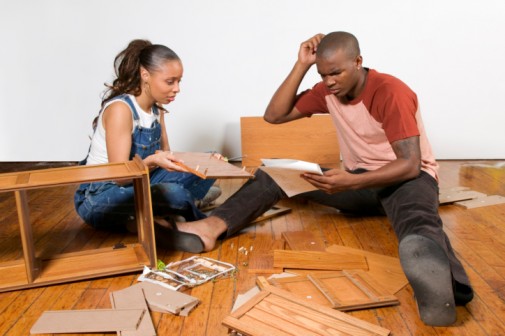Complete your next DIY project without an ED visit

It’s the first day of Spring and if you are a homeowner, that means, time to begin those do-it-yourself (DIY) house projects – you know, the kind that help you avoid the cost of hiring contractors and handymen because you think you can handle such projects yourself.
Sounds frugal, right? Well, maybe not so much. DIYs can prove downright dangerous and result in a trip to the emergency department, unless simple, common sense precautions are observed, according to emergency medicine physicians.
“Every year, we treat patients who have been injured at home while trying to undertake household projects,” says Dr. Brian Sayger, chair of emergency medicine at Advocate Christ Medical Center in Oak Lawn, Ill.
Of the estimated 43 million do-it-yourselfers in this country, approximately one in five end up at in the hospital each year as a result of injuries incurred while working on a home project, according to the Home Safety Council. The figure does not include the thousands of other homeowners who suffer minor cuts, abrasions and falls that may not require a trip to the emergency room.
Injuries can range from minor lacerations that require stitches to more serious problems, such as fractures, head trauma, eye injuries, amputated fingers, poisoning, burns caused by dangerous mixing of household cleaners or motor and paint solvents, falls from ladders and roofs, improper use of power tools like nail guns and saws and a general failure to “read instructions” before proceeding with a project.
In a report issued a few years ago, the U.S. Consumer Product Safety Commission reported that nearly 250,000 persons are treated in hospital emergency departments annually as a result of injuries sustained in falls from ladders or step stools making them the leading cause of home related injuries. The correct shoes, proper placement of a ladder and the way one positions themselves while on a ladder are key factors in minimizing the risk of a fall according to experts.
Meanwhile, Dr. Sayger tells do-it-yourselfers to read all instructions before beginning a project. “The purpose of product labels is to minimize your risks. Read the labels and follow the recommendations.”
Instructions often call for the product user to wear safety glasses, protective gloves and clothing and even a mask. Many household chemicals, for example, are corrosive, meaning they can burn the skin and cause permanent eye damage if splashed.
Pesticides and herbicides applied to lawns can be absorbed through the skin or lungs and affect nerves. Some of the chemicals in common consumer products are known cancer-causing agents and must be used cautiously and in well ventilated areas.
“Those who fail to follow instructions for handling chemicals and solvents may experience difficulty in breathing, dizziness, watery or itchy eyes, skin rashes or burns, and nausea,” says Dr. Sayger.
Emergency medicine physicians offer these additional key safety tips:
- Know how to use power tools properly and safely. Make sure the power button is in the “off” position before plugging a tool into an electrical source.
- Keep knives and cutting tools sharp. Dull blades require more force and increase the risk for injury.
- Protect your eyes. Some 30,000 individuals suffer eye injuries every year because of failure to wear protective goggles, according to the College of Optometrists.
- Be especially cautious when using yard and garden equipment, such as lawnmowers and weed cutters. Make sure equipment is turned off before attempting to adjust it. Tripping over hoses is another hazard, especially among those who are age 65 and older.
- Most importantly, if the project seems too daunting – or dangerous – to go it alone, then the homeowner should consider hiring a professional.
“Home projects are rewarding and worth doing yourself when you can do them properly,” says Dr. Sayger. “However, knowing your limitations and paying attention to the task at hand will avoid a costly trip to the emergency department.”
Related Posts
Comments
One Comment
About the Author
health enews staff is a group of experienced writers from our Advocate Health Care and Aurora Health Care sites, which also includes freelance or intern writers.


















I’ll leave it to the experts. Just cutting fruit can be dangerous at my house!